The Margery Allingham Walk
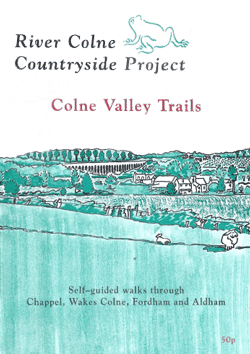
The Margery Allingham Walk is one of 3 walks in the first booklet produced by the River Colne Countryside Project (prior to 2013). Produced in association with local people & groups, this self-guided walk was originally marked out with way markers like those below. The River Colne Countryside Project is a joint venture between CBC and BDC; it is a partner in the Colchester Countryside Service.
If you would rather use a printed copy then please download the following PDF file. It will squeeze onto 1 page if printed double-sided.
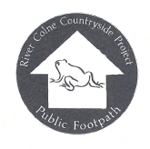
Introduction
This is one of three walks that can be started from Chappel. Chappel is between Halstead and Colchester on the A604 and can be reached by bus from these towns (No. 88). It also has a station on the Marks Tey-Sudbury railway line. The walk is about 6 miles long and should take about 2½ hours.
The other two walks are:
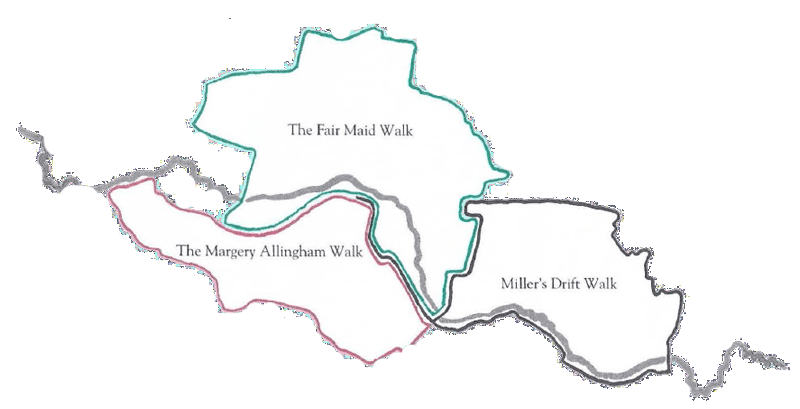
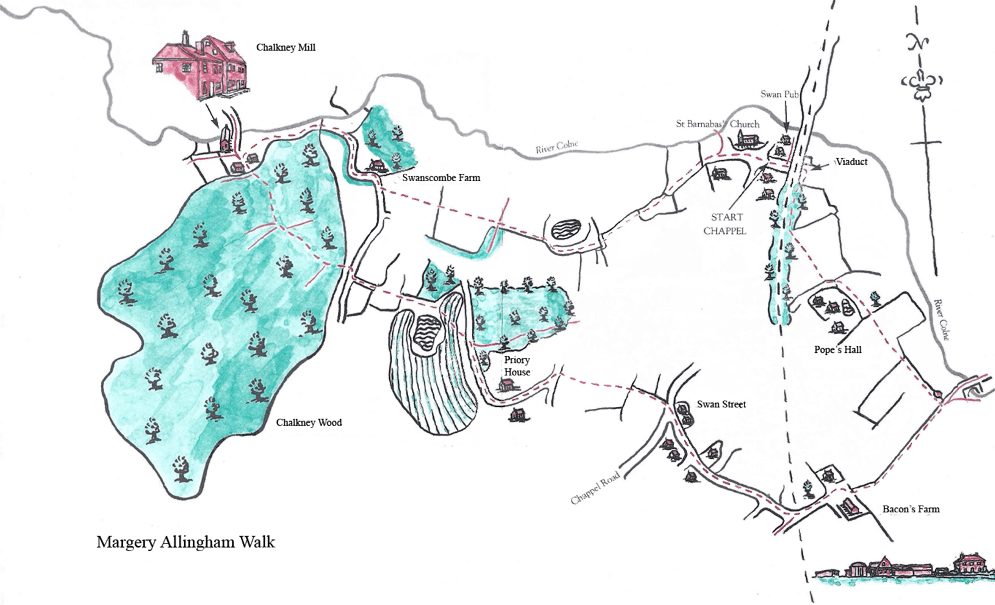
The Text & Original Images to Accompany the Walk
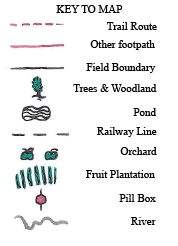
Margery Allingham was a distinguished author who lived in Viaduct Farm, Chappel, in the early 1930’s before moving to Tolleshunt D’Arcy. Her principal genre was detective fiction and Agatha Christie regarded Margery’s books as superior to her own. However it was the publication in 1941 of “The Oaken Heart”, which detailed life in tl1e village of Pontisbright (the old name for Chappel) in the late thirties, which shows her deep affection for the village and its people. The book focuses particularly on the village cricket club and the annual cricket parties, instigated by her husband, Pip Carter. This walk was named by Chappel Parish Council.
Chalkney Mill
Chalkney Mill was built in the early 18th century as a Fulling Mill, fulling being a process in the treatment of wool. In the 19th century it was converted for corn milling. It was last used as a mill in the 1930’s and was converted into a house in the 1980’s.

Chalkney Wood
Chalkney Wood may be a remnant of the vast forest which once covered much of the country. It has been managed almost continuously: for hundreds of years, producing timber, firewood and coppice products, such as poles and rods for hurdle making and thatching. The coppice rotation is still in operation in part of the woodland, adding to its overall diversity. Chalkney Wood holds a wide variety of wildlife including deer, badgers and over 30 species of breeding birds. Th e plant and insect communities include a number of scarce species sucl1 as violet helleborine and five different types of hawk moth. Tree species include small leaved lime and wild service, both indicators of ancient woodland.
Bacon’s Farm
From Bacon’s Farm there are fine views across the Colne Valley. To the North is Chappel, with the Railway Station and Museum beyond on the northern slope of the valley. From here you can also look down-river towards Ford Street and the village of Fordham on the other side of the valley to the North East.


